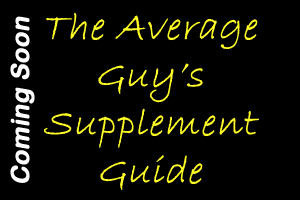If you have ever worked with a fitness professional or maybe contemplating hiring a fitness professional to help you there are certain questions and testing that should be carried out prior to any workout being designed or implemented. This is a perfect opportunity to let you know what I, as a fitness professional, is looking for when I meet with a new client for the first time. All my clients will go through the same assessment process. Certain exercises may be omitted or altered if there is a physical limitation or problem that arises during our initial conversation. So, let me take you through a typical first meeting that is done at our fitness studio.
Your first meeting with me is for your initial assessment. During this time, I am asking a lot of questions regarding medical and exercise history. We then will head into the gym for a series of exercises and tests. I am going to go through the assessment process and in a future newsletter I will explain how I take the information garnered in the assessment and apply it to program design for your workout.
I usually start my assessment at ground level and work my way up. I prefer to use a systematic approach to ensure that we cover all the bases and at times it will remind a client of an old injury or event that occurred in the past. I will start by inquiring about any issues involving the feet or ankles. This could range from anything like bunions to Achilles tendon injuries or ankle sprains or fractures. Any of these would have implications in designing a program and exercise selection. We do know that ankle sprains affect glute activation through possible nerve interruption. The exact mechanism is not known yet, but it is evident that the glute muscle
on the side of the injury is quite often affected and for this reason, we will want to ensure that we add glute activation work in that person's program.
Moving up the ladder, I will address the knees. Issues such as anterior knee pain, old injuries (meniscal tears, ligament injuries) or lateral knee pain are all very relevant and will influence the program and exercises used. A lot of knee issues can be the result of hip or ankle mobility problems, so I will take this into account when discussing location, severity and occurrence of knee pain.
Next I will address the hips and low back. Sciatic pain, hip bursitis, low back pain are all areas that need to be addressed, discussed and evaluated during this initial assessment. Working with an older population quite often will mean spinal stenosis, disc injuries, arthritic changes, degenerative changes – all of which are vital to know prior to both the rest of the assessment in the gym and the eventual design of the program. Some clients will
arrive with x-ray reports, a physio report or a physician's note all of which must be discussed.
Following the lower body, I will move on and question the shoulders, neck, elbows and wrists. Shoulder issues abound and a large percentage of clients will have varying shoulder issues. These range from impingement syndrome, rotator cuff injuries, capsule weakness or injury, decreased ROM due to calcium deposits. The neck can be a constant source of pain and irritation for some people and the causes can be varied ranging from arthritic/degenerative changes in the cervical vertebrae to stress and constantly tight muscles. Elbows are another area that a lot of people will have issues with. With our very active lifestyles, elbow tendonitis is common.
Wrists and hands can be problematic in a lot of occupations with repetitive use activities resulting in carpal tunnel syndrome. I will also quiz on family or personal history of heart disease, hypertension or diabetes. I am also interested in your present activities both work and leisure related. Repetitive use activities such as computer work, grocery store checkout, or even a golf pro will lend themselves to injuries or altered movement patterns due to the repetitive nature of their job. Exercise history is also important as that will usually give me a good indicator of how your muscles will respond to the teaching of new movement patterns and also your tolerance of activity.
I will also go over medication history and request a list of present medications. We do need to know of certain medications, primarily diabetic or cardiac medications that may have a bearing on your exercise tolerance and program safety. Rounding out the interview part of the assessment is height, weight, measurements if requested or needed and resting heart rate and blood pressure.
We will also discuss in detail your goals, hopes and expectations of an exercise program. Helping you to establish realistic and healthy goals can be an integral part of this first assessment.
The assessment process is an integral part of the overall plan for a new client. After all if you don’t know where you are, don’t know where you want to go to – how will know how to get there. I use the assessment process as a road map for our fitness journey. We have a starting point, we have established our destination or goal, and from that we will determine our planned route.
The assessment is part of the blueprint for fitness success. Without it, no plan is possible.
Till next time,
Narina
“Monitoring, Mentoring, Motivation”
